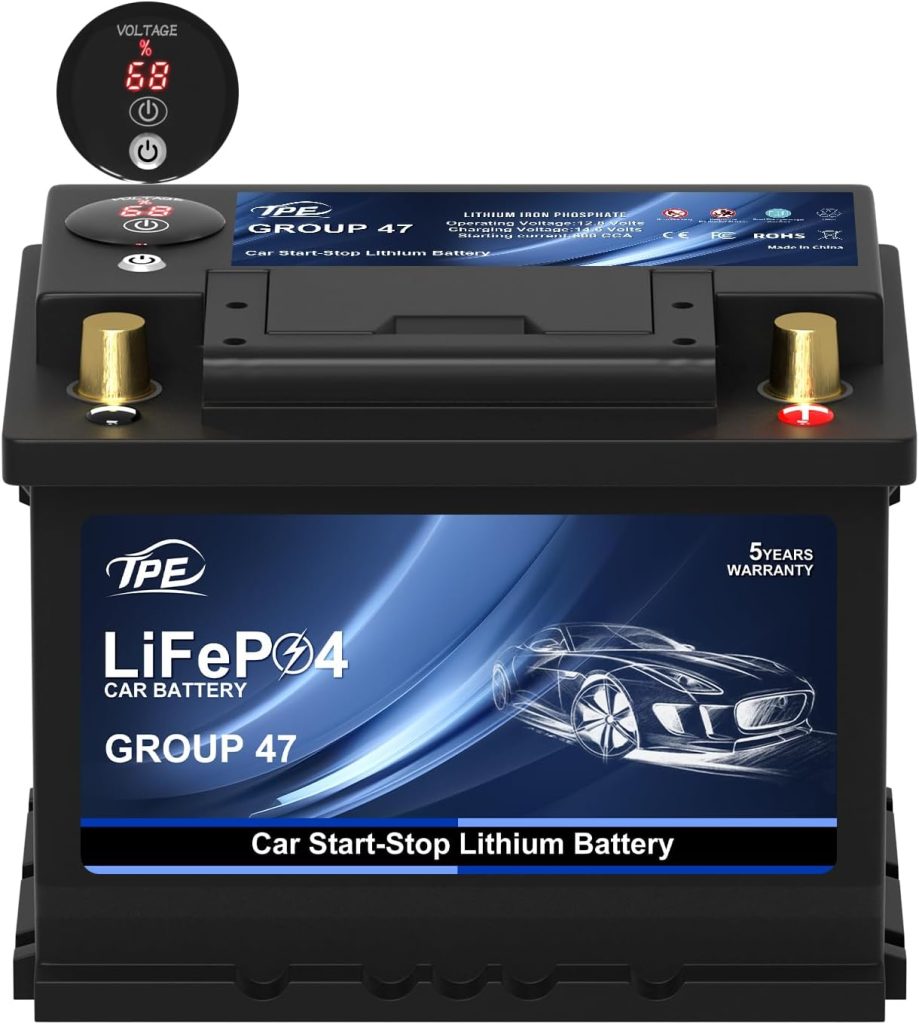As an Amazon Associate, I earn from qualifying purchases.
Seeing smoke billowing from your car can be one of the most alarming experiences for any driver. Your heart starts racing, your palms get sweaty, and a thousand worst-case scenarios flash through your mind. Is your engine about to explode? Will you be stranded on the side of the road?
The good news is that not all car smoke signals catastrophic failure. However, it’s always a warning sign that something needs attention. Understanding what different types of smoke mean can help you respond appropriately and potentially save you from costly repairs.

Whether it’s wispy white vapor on a cold morning or thick black clouds from your exhaust, each type of smoke tells a different story about your vehicle’s condition. Acting quickly and knowing what to look for can make the difference between a minor repair and a major engine overhaul.
Why Is Smoke Coming from My Car?
Contents
Car smoke is essentially your vehicle’s way of communicating that something isn’t working correctly. When various fluids, components, or systems malfunction, they often produce visible smoke as a byproduct.
The smoke itself typically results from burning or evaporating fluids, overheating components, or combustion problems within the engine. Your car contains numerous fluids—engine oil, coolant, transmission fluid, brake fluid, and power steering fluid—and when any of these leak onto hot engine components or burn within the combustion chamber, smoke is the visible result.
The key to understanding why your car is smoking lies in two critical factors: the color of the smoke and where it’s coming from. These clues help mechanics and car owners pinpoint the root cause and determine the urgency of the situation.
Types of Car Smoke and What They Mean (Step-by-Step Diagnosis)
White Smoke
White smoke is perhaps the most common type you’ll encounter, but it can mean several different things depending on the circumstances.
On cold mornings, thin white vapor from your exhaust is completely normal. This happens because water vapor in the exhaust system condenses when it meets cold air, creating what looks like smoke but is actually harmless steam.
However, thick, persistent white smoke that continues after your engine warms up typically indicates a coolant leak. When coolant enters the combustion chamber—often through a blown head gasket or cracked cylinder head—it burns and creates dense white smoke with a sweet smell.
Blue Smoke
Blue or gray smoke almost always points to burning oil. This occurs when engine oil seeps into the combustion chamber and burns along with the fuel mixture.
Common causes include worn piston rings, damaged valve seals, or a faulty PCV (positive crankcase ventilation) system. You might notice blue smoke is more prominent during startup or when accelerating hard, as these conditions create more pressure that forces oil past worn seals.
Black Smoke
Black smoke indicates your engine is burning too much fuel relative to air—a condition called “running rich.” This smoke appears dark and sooty, often accompanied by poor fuel economy and reduced engine performance.
Potential causes include a clogged air filter, malfunctioning fuel injectors, or problems with the engine’s computer system that controls the fuel mixture.
Smoke from Under the Hood
When smoke appears from under your hood rather than the exhaust, it usually means fluids are leaking onto hot engine components. Oil, coolant, or other fluids dripping onto the exhaust manifold, engine block, or other heated surfaces will create smoke and often produce distinct smells.
Smoke from the Exhaust
Exhaust smoke provides valuable diagnostic information because it shows what’s happening inside your engine’s combustion chambers. The color and thickness of exhaust smoke can help identify specific problems with fuel delivery, oil consumption, or cooling system integrity.
Common Causes of a Smoking Car
Oil Leak
Oil leaks are among the most frequent causes of car smoke. When engine oil drips onto hot surfaces like the exhaust manifold, it creates smoke and a distinctive burning smell. Common leak sources include worn gaskets, damaged oil seals, or loose drain plugs.
Small oil leaks might only produce occasional wisps of smoke, while larger leaks can create more dramatic smoke displays. Beyond the smoke, oil leaks can lead to low oil levels and potential engine damage if left unaddressed.
Coolant Leak
Coolant leaks can cause both external smoking (when coolant hits hot surfaces) and internal smoking (when coolant enters combustion chambers). External coolant leaks often result from damaged hoses, a failing radiator, or a leaking water pump.
Internal coolant leaks are more serious and typically stem from head gasket failure or cracked engine components. These issues allow coolant to mix with engine oil or enter combustion chambers, creating the characteristic thick white smoke.
Electrical Issues
Electrical problems can cause smoking when wires overheat or short circuit. Burned wiring insulation creates acrid-smelling smoke that’s often accompanied by electrical failures like non-functioning lights or accessories.
While less common than fluid-related smoking, electrical issues require immediate attention since they pose fire risks.
Overheating Engine
An overheating engine can cause multiple types of smoking. Excessive heat can cause coolant to boil and create steam, oil to burn off hot surfaces, and various seals and gaskets to fail.
Engine overheating often results from cooling system problems like a faulty thermostat, broken water pump, or blocked radiator.
Worn Piston Rings or Gaskets
Internal engine wear, particularly worn piston rings or valve seals, allows oil to enter combustion chambers where it burns and creates blue smoke. This type of wear typically develops gradually over high mileage and may be accompanied by increased oil consumption.
Similarly, worn head gaskets can allow coolant into combustion chambers, producing white smoke and potentially causing serious engine damage.
What to Do If Your Car Starts Smoking
Pull Over Safely
The moment you notice smoke, find a safe place to stop. Turn on your hazard lights and pull over to the shoulder, parking lot, or side street away from traffic. Don’t panic, but act quickly—continuing to drive a smoking car can cause severe damage.
Check Temperature Gauge
Once stopped, check your temperature gauge immediately. If it shows overheating, turn off the engine right away. If the temperature appears normal, you might have a less urgent issue, but you should still investigate carefully.
Avoid Opening the Hood Immediately
Resist the urge to immediately pop the hood. If your engine is overheating, opening the hood can release scalding steam or coolant that could cause serious burns. Wait at least 15-20 minutes for things to cool down before investigating.
Call a Mechanic or Tow Service
Unless you’re certain the smoke is just normal condensation, contact a qualified mechanic or towing service. Professional diagnosis is often necessary to determine the exact cause and appropriate repairs.
Do Not Keep Driving if Unsure
When in doubt, don’t drive. The cost of towing is minimal compared to potential engine damage from continued operation. If you must drive, keep trips extremely short and monitor your temperature gauge constantly.
Protect Your Engine Before It’s Too Late
Car smoke should never be ignored, regardless of its color or source. While some smoking issues are minor and inexpensive to fix, others can lead to catastrophic engine failure if left unaddressed.
The key to minimizing repair costs lies in early detection and prompt action. Regular maintenance, including oil changes, coolant system flushes, and routine inspections, can prevent many smoking-related problems before they start.
Remember that modern cars are complex machines with interconnected systems. What starts as a small leak or minor wear issue can quickly cascade into major problems if ignored. By understanding what different types of smoke mean and responding appropriately, you can keep your car running smoothly and avoid expensive repairs.
Frequently Asked Questions
What does white smoke from the exhaust mean?
Thin white vapor on cold mornings is normal condensation. However, thick, persistent white smoke usually indicates coolant entering the combustion chamber, often due to a blown head gasket or cracked cylinder head.
Can I drive my car if it’s smoking but not overheating?
It depends on the type and amount of smoke. Light wisps might be okay for short distances, but any significant smoking warrants immediate professional attention. Continued driving risks expensive engine damage.
Why is there smoke from under my hood but no smell?
Smoke without smell might indicate steam from a small coolant leak or normal evaporation. However, any smoke from under the hood should be investigated promptly, as it could indicate developing problems.
Is blue smoke always a sign of burning oil?
Yes, blue or gray smoke consistently indicates oil burning in the combustion chamber. This typically results from worn piston rings, valve seals, or PCV system problems.
As an Amazon Associate, I earn from qualifying purchases.



Hi, this is a comment.
To get started with moderating, editing, and deleting comments, please visit the Comments screen in the dashboard.
Commenter avatars come from Gravatar.